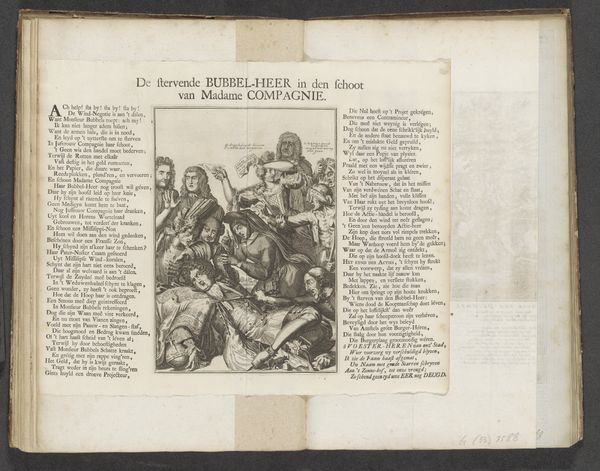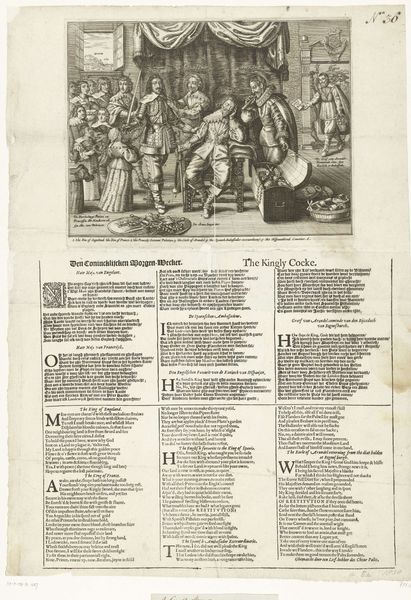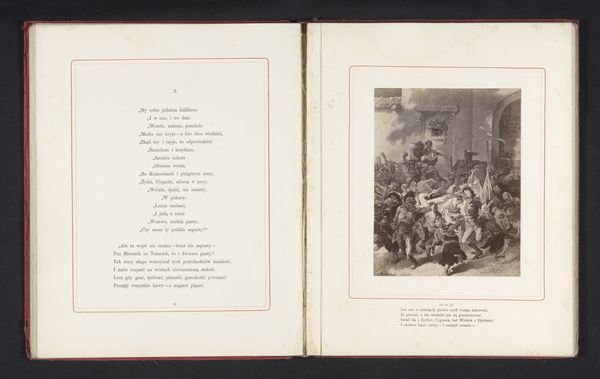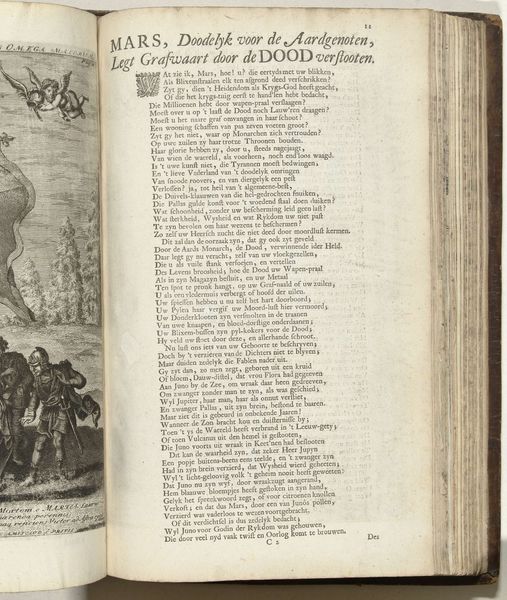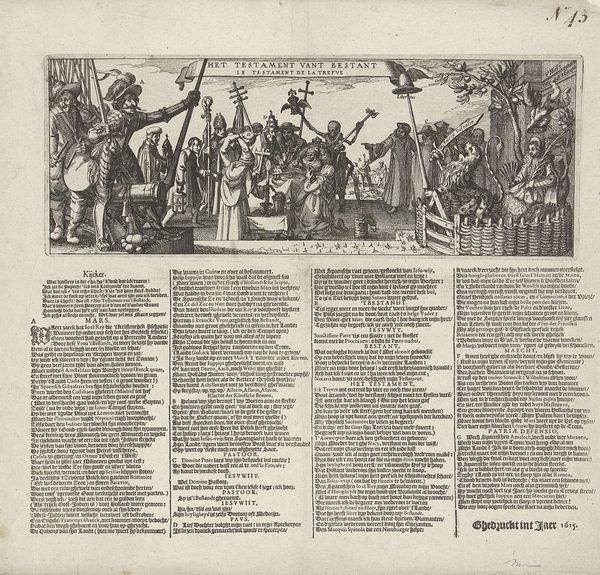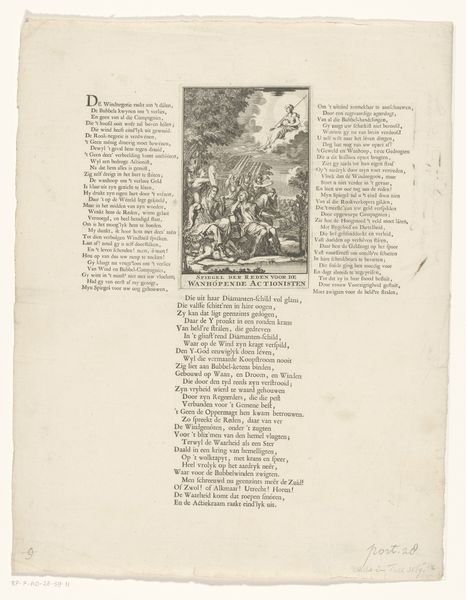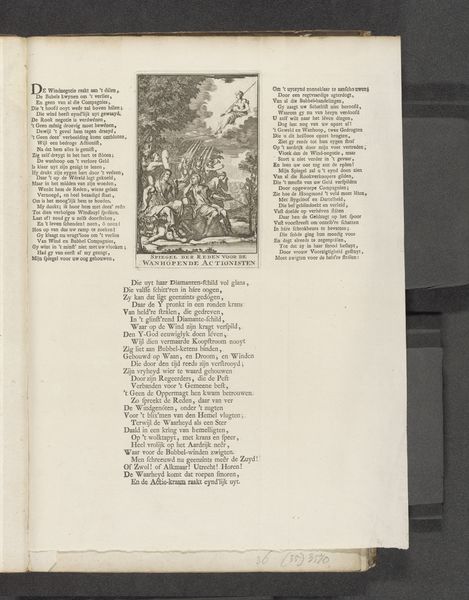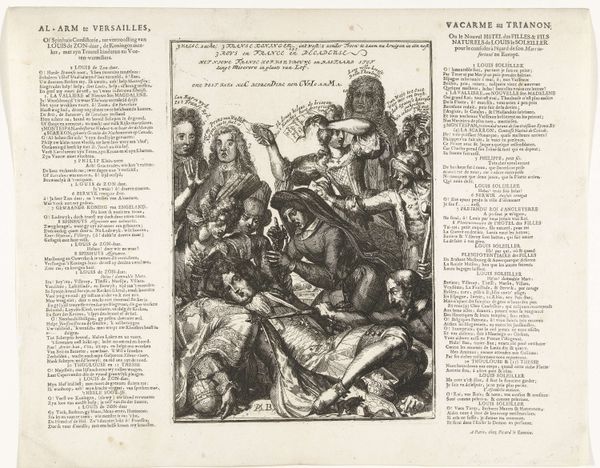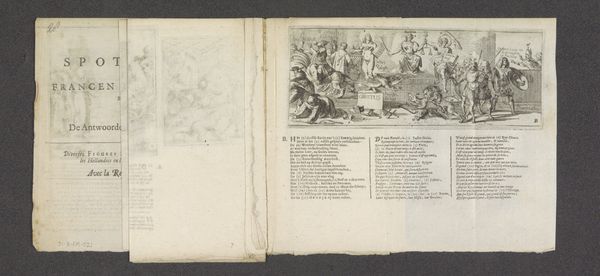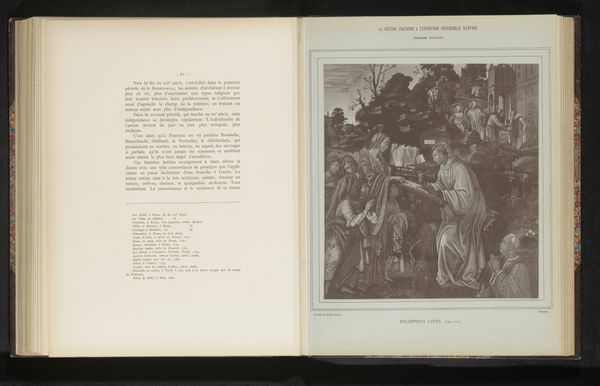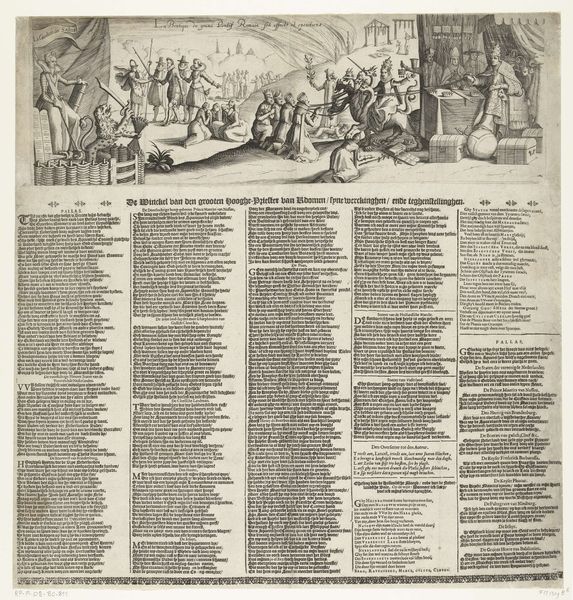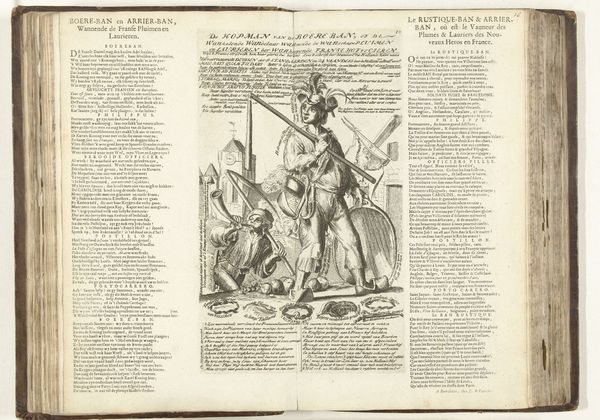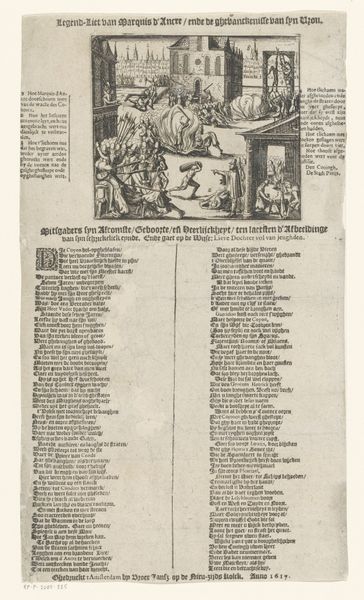
print, engraving
#
baroque
# print
#
genre-painting
#
engraving
Dimensions: height 363 mm, width 450 mm
Copyright: Rijks Museum: Open Domain
Editor: Here we have "The Dying Bubble Lord John Law, 1720" by Romeyn de Hooghe, a print from around 1706 to 1720. The image, with accompanying text, appears in an opened book, currently at the Rijksmuseum. The scene feels rather chaotic, doesn't it? With so many figures crammed into such a small space, seemingly focused on this central, reclining figure. What’s your initial interpretation? Curator: Chaos is the perfect word! It feels like a fever dream captured on paper. Look closer. Notice how de Hooghe uses satire to comment on John Law and the Mississippi Company bubble. Law is depicted as this dying figure, surrounded by figures representing the Company. Can you almost hear the whispers and the scramble? Editor: Absolutely. So, it’s like a morality play? A visual cautionary tale? Curator: Exactly. The exaggerated expressions, the cramped composition…it all contributes to the sense of impending doom. What stands out to me is the inclusion of the written text and the imagery side by side, to work together. Don’t forget the context! The Baroque period was known for its theatricality. Editor: The theatricality makes it unforgettable! It makes you wonder about the power that prints and engravings had back then. Almost like our memes today, reflecting on social events and trending topics. Curator: Ah, that’s a clever way to put it! Highlighting this cultural critique. Art gives you a new language to express how you feel and how society reacts. Editor: I never thought of it that way. This made me realize how art is a continuous, flowing commentary on the world. Thanks!
Comments
No comments
Be the first to comment and join the conversation on the ultimate creative platform.
